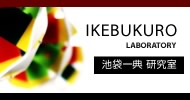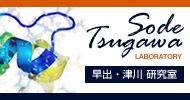Team:Tokyo-NoKoGen/Project/overview
From 2012.igem.org
(Difference between revisions)
| Line 2: | Line 2: | ||
{{Template:Team:Tokyo-NoKoGen/index_project}} | {{Template:Team:Tokyo-NoKoGen/index_project}} | ||
<html> | <html> | ||
| - | < | + | <B><font size=28>Coli express</b></font> |
| - | + | <br> | |
| - | + | ||
| - | < | + | |
| - | + | ||
<BR> | <BR> | ||
<BR> | <BR> | ||
| - | + | We created an E. coli for long distance communication. This “Communicheria coli” was inspired by the Pony Express, a rapid mail delivery service in the American Wild West, where mail was relayed by horseback riders. Communicheria coli sends a message, in the form of light, to distant cells, which then relay the message to other distant cells. | |
| - | + | Communicheria coli has light sensors constructed using the light receptor domain of bacterial sensory rhodopsin or the cyanobacterial green light sensor CcaS. In response to light signals, cells will induce their own lux operon to send the message to other distant cells, for example in a separate flask, which will in turn relay the message to other distant cells. | |
| - | + | To improve the effectiveness of our new signal delivery system, we set out to enhance the light intensity, change the light color, and shorten the response time. | |
| - | + | ||
| - | + | ||
| - | + | ||
| - | + | ||
| - | + | ||
| - | + | ||
| - | + | ||
| - | + | ||
| - | + | ||
| - | + | ||
| - | + | ||
| - | + | ||
| - | + | ||
| - | + | ||
| - | + | ||
| - | + | ||
| - | + | ||
| - | + | ||
| - | + | ||
| - | + | ||
| - | + | ||
| - | + | ||
| - | + | ||
| - | + | ||
| - | |||
</html> | </html> | ||
{{Template:Team:Tokyo-NoKoGen/contents_footer}} | {{Template:Team:Tokyo-NoKoGen/contents_footer}} | ||
Revision as of 08:41, 21 September 2012
- overview
- lux operon
- rhodopsin
- modelling
- Future work
- project
Coli express
We created an E. coli for long distance communication. This “Communicheria coli” was inspired by the Pony Express, a rapid mail delivery service in the American Wild West, where mail was relayed by horseback riders. Communicheria coli sends a message, in the form of light, to distant cells, which then relay the message to other distant cells. Communicheria coli has light sensors constructed using the light receptor domain of bacterial sensory rhodopsin or the cyanobacterial green light sensor CcaS. In response to light signals, cells will induce their own lux operon to send the message to other distant cells, for example in a separate flask, which will in turn relay the message to other distant cells. To improve the effectiveness of our new signal delivery system, we set out to enhance the light intensity, change the light color, and shorten the response time.
We created an E. coli for long distance communication. This “Communicheria coli” was inspired by the Pony Express, a rapid mail delivery service in the American Wild West, where mail was relayed by horseback riders. Communicheria coli sends a message, in the form of light, to distant cells, which then relay the message to other distant cells. Communicheria coli has light sensors constructed using the light receptor domain of bacterial sensory rhodopsin or the cyanobacterial green light sensor CcaS. In response to light signals, cells will induce their own lux operon to send the message to other distant cells, for example in a separate flask, which will in turn relay the message to other distant cells. To improve the effectiveness of our new signal delivery system, we set out to enhance the light intensity, change the light color, and shorten the response time.
 "
"





